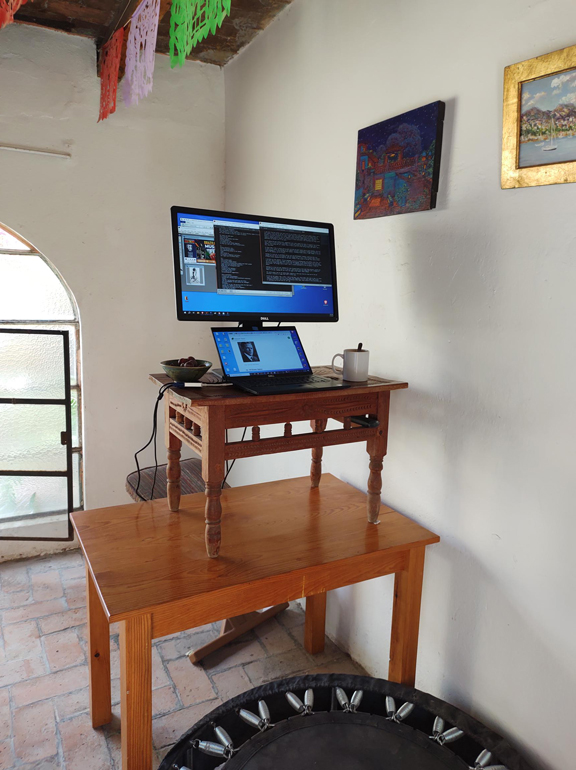
September 17, 2023
by Dr. David Fialk, Editor / Publisher
I came back from New Orleans last April with two new friends: a new, powerful, but compact, laptop, with a much smaller screen than my old one, and a largish flat-screen monitor. The first fit lightly into my backpack. The second travelled in a rather large, rather distored third carry-on bag (bless the hearts of American Airlines). They sit together in front of me now, mated together with a series of ungainly looking adapters thanks to the wizardry of Tulane University's tech department. The large screen quadruples the display size of the small.
My old laptop had been acting funny, dangerously even. After almost five years of service, it was slowing down. (Aren't we all?) But more worryingly, it would fall asleep and not wake up. Seemingly with no pattern, after being left for a while, once or twice a week its screen would go blank, and, matter what I did, stay blank.
At these times I had no recourse but to press and hold the power button and do a hard shutdown, then turn it back on. Of course, not shutting off the computer correctly, deliberately crashing the hard drive, was slowly damaging it. I tried adjusting Power Options. Following YouTube advice, I made changes to the core code of the machine; all to no avail.
Turning it on and off, in accordance with my work and entertainment schedule, would have been very awkward and also bad for the hard drive. When the laptop wasn't in use, I left a YouTube video, 48 Hours of Blank Screen, playing and hoped for the best, taking it like a punch in the gut every time it froze.

I now have two work stations. The new equipment, set up at a standing desk in my office, works fine. It's very fast, able to handle any number of open tabs and programs. My old laptop sitting in the next room, set up on my dining room table is as slow as ever. It regularly pauses as if it were an old person having mini-strokes. The strange truth is that I have a certain preference for the old machine. I like its pauses.
Staring at a screen all day, keeping one's eyes focused forever at the same fixed distance, wearies the muscles that move the eye (use it or lose it). These muscles then stop doing their part, changing the shape of the eye, helping the lens focus the light on the retina. (Bates Method for Better Vision)
The senile pauses that my old laptop makes remind me to look away from the screen and do the eye exercises I learned in a yoga class half a century ago.
